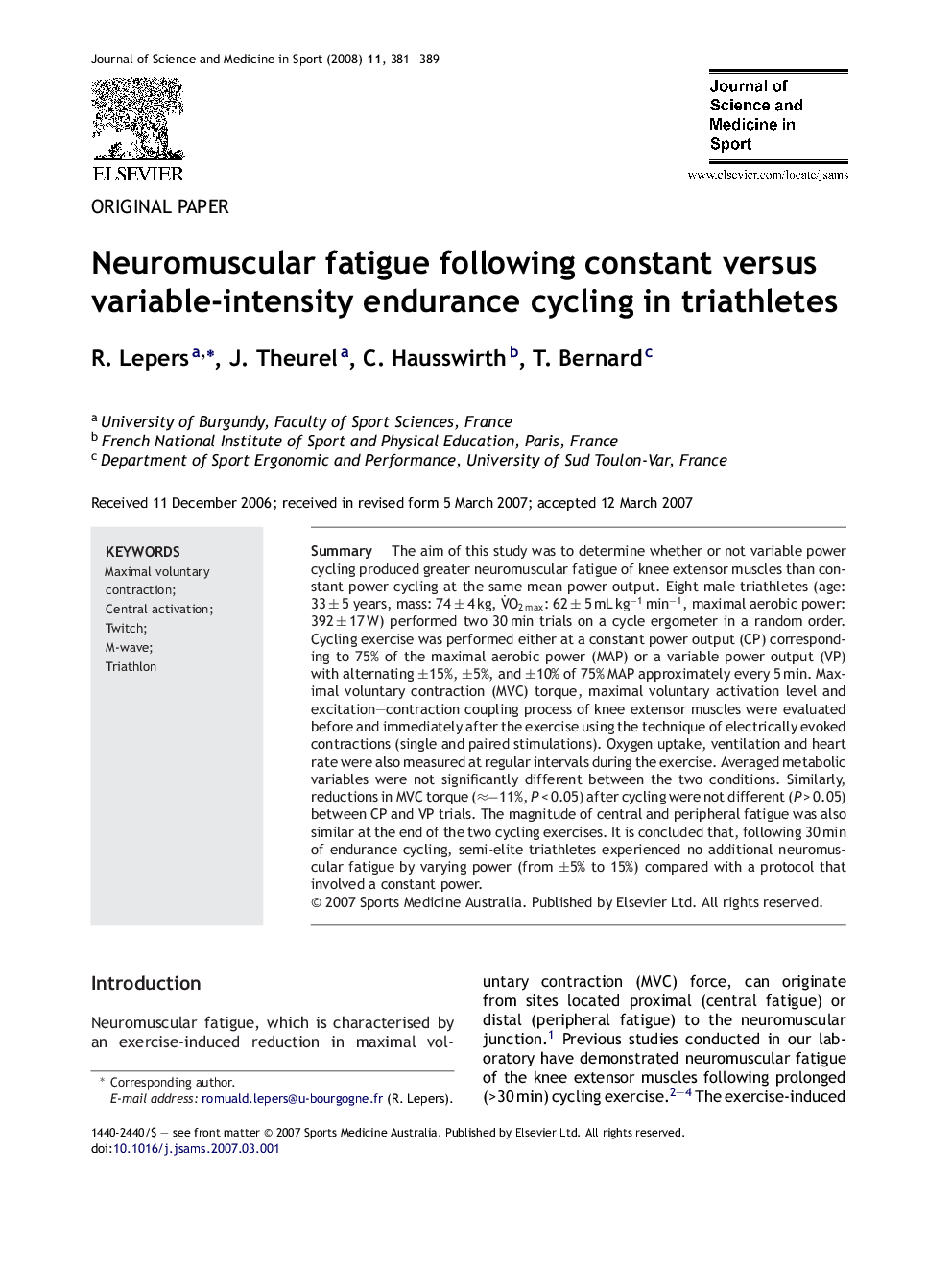| Article ID | Journal | Published Year | Pages | File Type |
|---|---|---|---|---|
| 2708941 | Journal of Science and Medicine in Sport | 2008 | 9 Pages |
SummaryThe aim of this study was to determine whether or not variable power cycling produced greater neuromuscular fatigue of knee extensor muscles than constant power cycling at the same mean power output. Eight male triathletes (age: 33 ± 5 years, mass: 74 ± 4 kg, V˙O2max: 62 ± 5 mL kg−1 min−1, maximal aerobic power: 392 ± 17 W) performed two 30 min trials on a cycle ergometer in a random order. Cycling exercise was performed either at a constant power output (CP) corresponding to 75% of the maximal aerobic power (MAP) or a variable power output (VP) with alternating ±15%, ±5%, and ±10% of 75% MAP approximately every 5 min. Maximal voluntary contraction (MVC) torque, maximal voluntary activation level and excitation–contraction coupling process of knee extensor muscles were evaluated before and immediately after the exercise using the technique of electrically evoked contractions (single and paired stimulations). Oxygen uptake, ventilation and heart rate were also measured at regular intervals during the exercise. Averaged metabolic variables were not significantly different between the two conditions. Similarly, reductions in MVC torque (≈−11%, P < 0.05) after cycling were not different (P > 0.05) between CP and VP trials. The magnitude of central and peripheral fatigue was also similar at the end of the two cycling exercises. It is concluded that, following 30 min of endurance cycling, semi-elite triathletes experienced no additional neuromuscular fatigue by varying power (from ±5% to 15%) compared with a protocol that involved a constant power.
